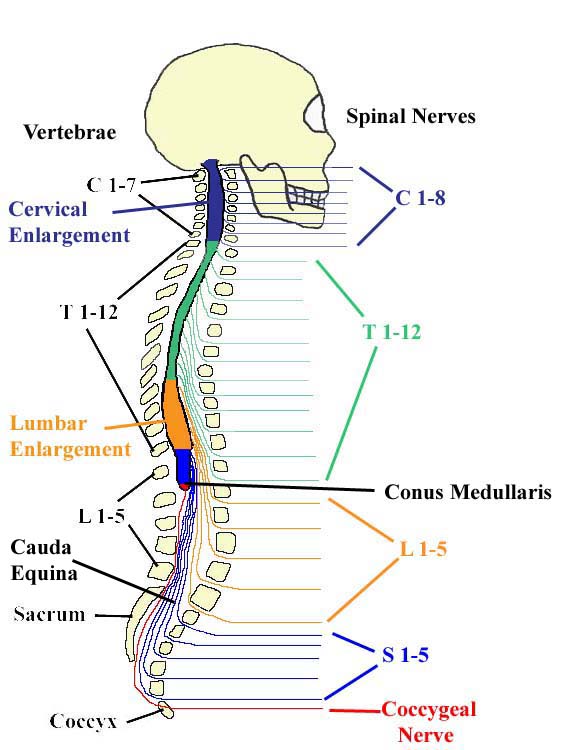 |
The spinal cord itself begins as a continuation of the medulla oblongata of the brain at the level of the foramen magnum in the skull. Along its course, the spinal cord gives rise to 31 pairs of spinal nerves: 8 cervical, 12 thoracic, 5 lumbar, 5 sacral, and 1 coccygeal. In general, the spinal nerves emerge below the pedicle of the vertebra for which they are named. For example, spinal nerve T3 exits through the intervertebral foramen between the 3rd and 4th thoracic vertebrae. In the cervical region, this rule does not apply. While the cervical region of the spine has 7 vertebrae, there are 8 cervical spinal nerves. Spinal nerve C1 exits above vertebra C1, spinal nerve C2 exits through the intervertebral foramen between the 1st and 2nd cervical vertebrae, etc. That pattern holds until spinal nerve C8 which exits between vertebrae C7 and T1. The nerve exiting below vertebra T1 is spinal nerve T1. This relationship is rather confusing in words, but is fairly clear when studied in a diagram. The spinal cord terminates at the level of the first or second lumbar vertebrae as the conus medullaris. Caudal to the conus medullaris are the nerve roots of the more caudal spinal nerves which are collectively called, because of their appearance, the cauda equina (horse's tail).
|






